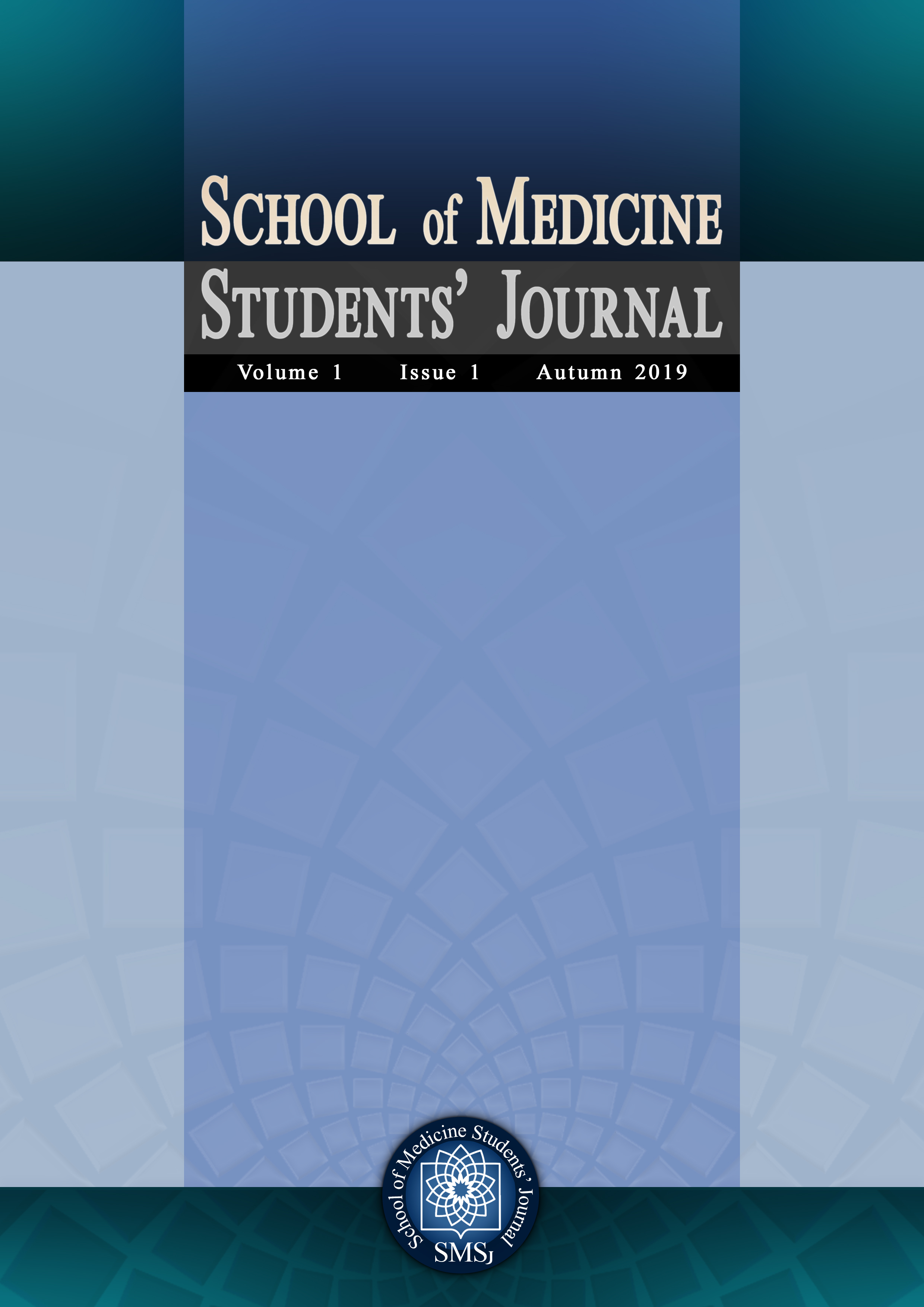Introduction of The School of Medicine Students’ Journal
School of Medicine Students' Journal,
Vol. 1 No. 1 (2019),
10 December 2019,
Page 2-2
https://doi.org/10.22037/smsj.v1i1.28288
It is our honor to present the first issue of School of medicine students’ journal.This is the first issue of the Journal of medical and biological sciences related to young researchers and students that have started their journey in the faculty of medicine in Shahid Beheshti University of Medical Sciences with the assistance of a group of elite and interested students. Transparently, with enthusiasm along with scientific methods, it is hoped that over time, this journal would be able to bring scientific research output to the attention of all researchers and scholars around the world.
Particularly, the process of selecting articles and reviewing them is as valid as to other distinct journals, and it does not differ in any aspect; however, the most indispensable point is the participation of medical students along with other students at Shahid Beheshti University of Medical Sciences in the conduct of the administration of the journal indeed. As a matter of fact, this is the nobility of this journal in which students directly assist in all aspects. In the course of the initiation of this journal, the students at the Student Research Committee were able to have regular meetings and review the most accredited scientific journals in order to be competitive with other journals. Apparently, we hope that the content of our journal would be interested by the scholars and researchers; furthermore, we desire ro become one of most trusted and accredited journals among the most recognized ones. I would like to appreciate Dr. Karimi, the professor of Immunology in the immunology department and the Director of Shahid Beheshti University of Medical Sciences magazines. Dr. Karimi has assisted the journal from all aspects and she worked non stop for the improvement of the quality of this journal.
I would also like to thank Mr. Amir Hossein Aghdaee who worked truly hard as the Co-Editor-in-Chief and organized most of the works for the first issue of this journal. We wish to have a prosperous journal with the most trusted and accurate articles in which scientist would be able to benefit from them.




